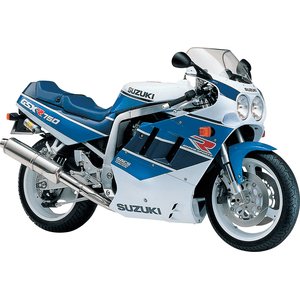Suzuki GSX-R 750 [1998-1999]: The Sweet Spot of 90s Sportbike Brilliance
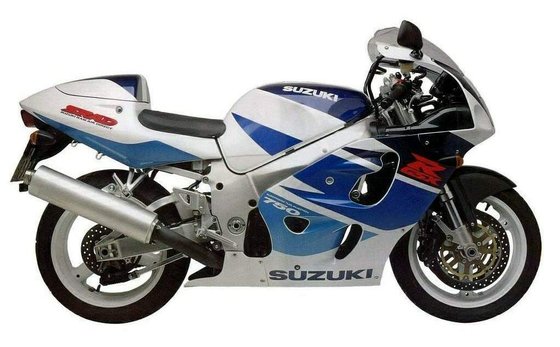
Introduction
The late 1990s marked a golden era for sportbikes, and few machines encapsulate that period’s raw energy better than the Suzuki GSX-R 750. For 1998-1999, Suzuki refined its iconic inline-four platform with cutting-edge tech for the time, creating a motorcycle that balanced track-ready aggression with street-riding practicality. Having spent time with a pristine 1999 example, it’s clear why this generation remains a cult favorite among riders who crave the mechanical purity of pre-electronic-aid sportbikes.
This isn’t just a machine—it’s a time capsule of an era when horsepower wars met analog thrills. Let’s dissect why the GSX-R 750W still resonates today.
Design & Ergonomics
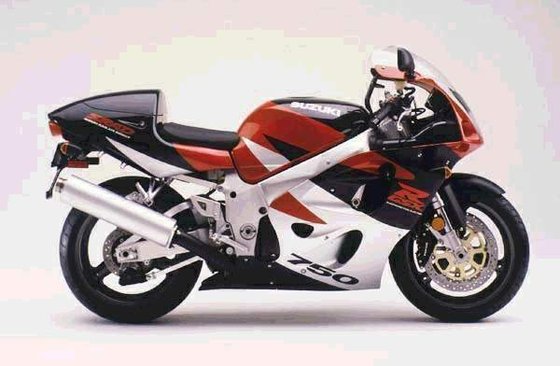
The GSX-R 750’s design screams late-90s aggression. The twin-beam aluminum frame, angular fairing in White/Blue or Red/White/Black, and minimalist tail section reflect Suzuki’s “race-replica” ethos. At 2055 mm (80.9 inches) long with a 1395 mm (54.9-inch) wheelbase, it’s compact by modern standards but feels planted at speed.
The riding position is pure sportbike: clip-on handlebars and rearset pegs put your weight on your wrists, while the 830 mm (32.7-inch) seat height accommodates most riders. After an hour in traffic, you’ll feel it—this is a bike built for carving corners, not commuting. The redesigned windscreen deflects wind cleanly over the helmet at speed, though taller riders might still get buffeting above 160 km/h (100 mph).
Engine & Performance
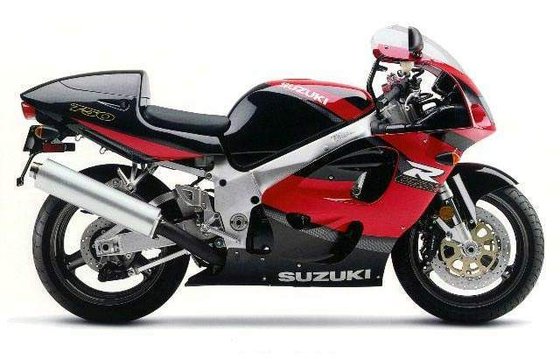
The heart of the GSX-R 750 is its 749cc inline-four, a masterpiece of 90s engineering. Fuel injection replaced carbs for 1998, using 46mm throttle bodies—a first for the model. The result? 134 HP (99 kW) at 12,000 RPM and 82.3 Nm (60.7 ft-lbs) of torque at 10,300 RPM.
Twist the throttle, and the engine delivers a linear surge from 6,000 RPM before exploding into a metallic scream past 10,000 RPM. The 6-speed gearbox clicks through ratios with rifle-bolt precision, while the lighter 525 chain (vs. the older 530) reduces unsprung weight.
Acceleration is brutal:
- 0-100 km/h (0-62 mph): 3.1 seconds
- Top speed: 265 km/h (165 mph)
- Quarter mile: 10.5 seconds
The fuel-injected engine avoids the flat spots of carbureted rivals, though it lacks the low-end grunt of modern bikes. Keep it above 8,000 RPM, and it’s pure adrenaline.
Handling & Chassis
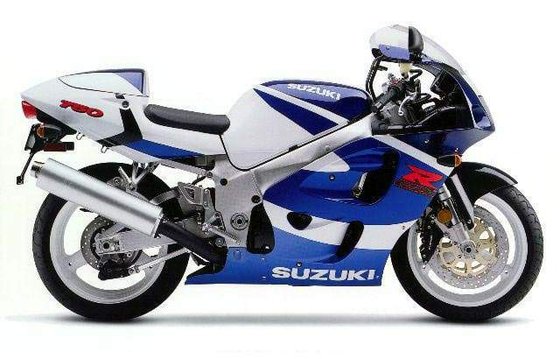
Suzuki’s aluminum twin-spar frame and Showa suspension make this GSX-R a cornering weapon. The 43mm inverted forks and rear shock offer full adjustability—rebound, compression, and preload. Even today, the setup feels remarkably composed:
- Front suspension travel: 120 mm (4.7 inches)
- Rear suspension travel: 133 mm (5.2 inches)
- Rake/Trail: 24° / 96.5 mm (3.8 inches)
Throw it into a hairpin, and the GSX-R carves with telepathic feedback. The 190/50-ZR17 rear tire provides ample grip, while the 120/70-ZR17 front bites into asphalt. At 194 kg (427.7 lbs) wet, it’s heavier than modern middleweights but hides its mass well.
Braking? The twin 320mm front discs with 6-piston calipers deliver fierce stopping power. The rear 220mm disc is adequate but clearly an afterthought—most stopping happens up front.
Competition
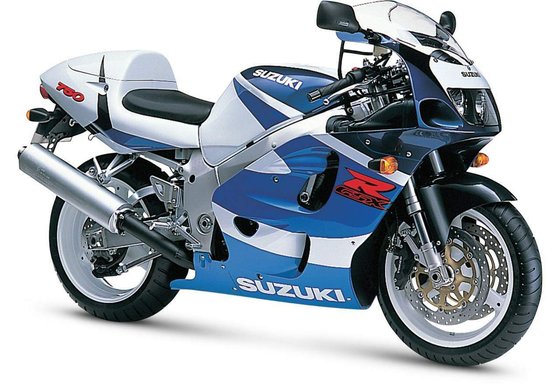
In the late 90s, the GSX-R 750 faced fierce rivals:
- Ducati 748
- Pros: Exotic V-twin soundtrack, sublime handling
- Cons: 80 HP deficit, finicky desmo valves
-
Verdict: The Ducati charms on twisty roads but gets demolished in straight-line battles.
-
Honda CBR600F
- Pros: Smooth inline-four, comfier ergonomics
- Cons: 128 HP vs. Suzuki’s 134 HP, softer suspension
-
Verdict: A better daily rider but lacks the GSX-R’s track-edge sharpness.
-
Yamaha YZF-R6
- Pros: Rev-happy 600cc engine, aggressive styling
- Cons: Less torque, cramped ergonomics
- Verdict: The R6 appeals to purists, but the GSX-R’s extra 150cc gives it midrange muscle.
The GSX-R 750’s genius was bridging the 600cc and 1000cc segments. It offered nearly liter-bike power with 600-like agility—a balance rivals couldn’t match.
Maintenance
Owning a 25-year-old sportbike requires diligence. Here’s what GSX-R 750 owners should prioritize:
- Chain & Sprockets
-
The 525 O-ring chain lasts ~20,000 km (12,400 miles) with proper care. Check tension every 500 km (310 miles).
-
Valve Adjustments
-
Valve clearances tighten over time. Check every 10,000 km (6,200 miles):
- Intake: 0.10–0.20 mm (0.004–0.008 in)
- Exhaust: 0.20–0.30 mm (0.008–0.012 in)
-
Cooling System
-
Flush coolant every 2 years. Use ethylene glycol mix and check for leaks at the 4-into-2-into-1 exhaust header.
-
Brake Upgrades
-
Swap sintered pads for better bite. Consider braided stainless lines to firm up lever feel.
-
Spark Plugs
- NGK CR9E plugs foul slowly but replace every 12,000 km (7,500 miles) for optimal combustion.
Pro Tip: The fuel injection system is reliable but sensitive to dirty injectors. Use a cleaner like Motul FI Injector every 5,000 km (3,100 miles).
Conclusion
The 1998-1999 GSX-R 750 isn’t just a motorcycle—it’s a statement. It captures a moment when sportbikes were unfiltered, demanding respect with every twist of the throttle. While modern bikes boast traction control and ride modes, this Suzuki rewards skill with unadulterated feedback.
Is it practical? No. Comfortable? Only if you’re under 30. But for riders who want to experience 90s superbike glory, few machines deliver like the GSX-R 750. Maintain it well, and it’ll still outgrin modern competitors on a twisty backroad.
At MOTOPARTS.store, we’ve got the chains, brake pads, and OEM-spec components to keep your GSX-R 750 thriving. Because classics deserve to be ridden—not just remembered.
Specifications sheet
| Engine | |
|---|---|
| Stroke: | Four-stroke |
| Max power: | 99 kW | 133.0 hp |
| Max torque: | 82 Nm |
| Fuel system: | Fuel injection, 46 mm throttle bodies |
| Max power @: | 12000 rpm |
| Displacement: | 749 ccm |
| Fuel control: | Double Overhead Cams/Twin Cam (DOHC) |
| Max torque @: | 10000 rpm |
| Bore x stroke: | 72.0 x 46.0 mm (2.8 x 1.8 in) |
| Configuration: | Inline |
| Cooling system: | Liquid |
| Compression ratio: | 12.0:1 |
| Lubrication system: | Wet sump |
| Number of cylinders: | 4 |
| Valves per cylinder: | 4 |
| Dimensions | |
|---|---|
| Wheelbase: | 1395 mm (54.9 in) |
| Dry weight: | 178 |
| Wet weight: | 194 |
| Seat height: | 830 mm (32.7 in) |
| Overall width: | 720 mm (28.3 in) |
| Overall height: | 1135 mm (44.7 in) |
| Overall length: | 2055 mm (80.9 in) |
| Ground clearance: | 130 mm (5.1 in) |
| Fuel tank capacity: | 18.5 L (4.9 US gal) |
| Drivetrain | |
|---|---|
| Chain size: | 525 |
| Chain links: | 108 |
| Final drive: | chain |
| Gear ratios: | 1st 2.63 / 2nd 1.95 / 3rd 1.57 / 4th 1.36 / 5th 1.23 / 6th 1.12:1 |
| Transmission: | 6-speed, constant mesh |
| Rear sprocket: | 44 |
| Front sprocket: | 16 |
| Maintenance | |
|---|---|
| Rear tire: | 190/50-z-17 |
| Engine oil: | 10W40 |
| Front tire: | 120/70-z-17 |
| Break fluid: | DOT 4 |
| Spark plugs: | NGK CR9E or NGK CR9EIX |
| Spark plug gap: | 0.7 |
| Coolant capacity: | 2.55 |
| Forks oil capacity: | 0.98 |
| Engine oil capacity: | 2.8 |
| Chain lubrication interval: | Every 500-1000 km |
| Engine oil change interval: | Every 5000km or 2 years |
| Valve clearance (intake, cold): | 0.10–0.20 mm |
| Valve clearance check interval: | 24,000 km |
| Valve clearance (exhaust, cold): | 0.20–0.30 mm |
| Recommended tire pressure (rear): | 2.9 bar (42 psi) |
| Recommended tire pressure (front): | 2.5 bar (36 psi) |
| Performance | |
|---|---|
| Top speed: | 265 km/h (165 mph) |
| 0-100 km/h: | 3.1 seconds |
| CO2 emissions: | 167 g/km |
| Fuel consumption: | 7.2 L/100 km (32.7 mpg) |
| Chassis and Suspension | |
|---|---|
| Rake: | 24° |
| Frame: | Aluminum twin-beam |
| Trail: | 96.5 mm (3.8 in) |
| Rear brakes: | Single 220 mm disc, 2-piston caliper |
| Front brakes: | Dual 320 mm discs, 6-piston calipers |
| Rear suspension: | Swingarm with progressive linkage, fully adjustable rebound/compression damping, 10mm spring preload |
| Front suspension: | 43mm Showa inverted forks, fully adjustable rebound/compression damping, 15mm spring preload |
| Rear wheel travel: | 133 mm (5.2 in) |
| Front wheel travel: | 120 mm (4.7 in) |



